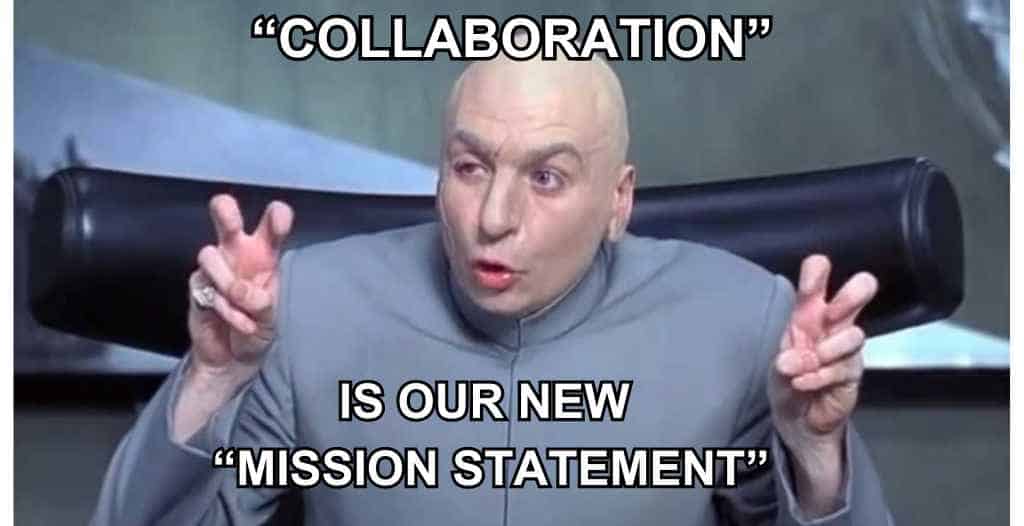Embarking on the Agile Odyssey: Beyond the Hype to Hard Truths
In the whirlwind world of IT, where the only constant is change, the Agile methodology has emerged as the superhero cape for many development teams. But like any hero’s journey, there’s a mix of triumphs and trials in any development process.
Table of Contents
ToggleThis guide isn’t just another echo in the chamber; it’s a straight-shooting, no-fluff map to navigating the pros and cons of methodologies for agile.
Whether you’re an IT maverick looking to pivot or a development team eager to refine its edge, buckle up. We’re diving deep into Agile’s waters, fishing out the shiny pearls of wisdom and the occasional old boot, to help you make an informed decision about adopting an agile methodology.

Why’s Agile Buzzing in Everyone’s Ears?
Remember when “Agile” was just a way to describe gymnasts or quick reflexes? In today’s software development world, it’s the buzzword that’s got everyone from cubicle dwellers to C-suite execs sitting up and paying attention.
But why the buzz? In essence, each agile methodology offer a dynamic alternative to the traditional waterfall model, emphasizing flexibility, customer satisfaction, and rapid iterations.
But agile is not just a methodology; it’s a mindset that’s as infectious as the latest viral dance craze, promising quicker delivery, adaptability, and a closer relationship with customers. Agile’s siren song is hard to resist, but it’s not all smooth sailing.
Agile Unveiled: Not Your Grandpa’s Project Management

Gone are the days of rigid project management, where plans were set in stone and changes were as welcome as a rainstorm at a picnic. Enter Agile, the not-so-new kid on the block that’s been shaking up the software development world for development teams worldwide.
With its roots in the Agile Manifesto of 2001, Agile methodologies have grown from a radical idea to a mainstream movement.
At its core, each of the Agile methodologies champions iterative development, where projects are broken down into manageable chunks, allowing teams of developers to adapt and evolve their work based on continuous feedback and changing requirements.
Agile’s Bright Side: Why It’s a Hot Ticket
Quick as a Whip Deliveries
Agile methodologies are like the sprinters of the software development world—fast, efficient, and always on their toes. By breaking down projects into smaller, manageable sprints, an Agile development team can churn out features at a pace that would make traditional methods blush.
This rapid-fire approach means quicker delivery times, enabling teams to respond to market changes with the agility of a cat. It’s not just about speed for speed’s sake; it’s about staying relevant in a market space that waits for no one.

Bend It Like Agile: Flexibility for the Win
If there’s one thing Agile methodologies do better than a contortionist, it’s flex. The agile development incremental approach allows development teams to adjust their trajectory mid-project without derailing the entire train. This adaptability is crucial in a world where customer needs shift faster than fashion trends.
It’s the difference between delivering a product that’s so last season and one that’s at the cutting edge.
Together Everyone Achieves More: Collaboration on Steroids
Agile turns the spotlight on teamwork, bringing developers, project managers, and customers together in a symphony of collaboration that would make even the most isolated coder consider a group hug.
With frequent collaboration, stand-ups, and reviews, Agile development fosters an environment where everyone has a voice and silos are as outdated as floppy disks. This emphasis on teamwork not only improves project outcomes but also boosts morale and engagement among team members.

Making Customers Grin Like Cheshire Cats
At the heart of the Agile development methodology is customer satisfaction. With continuous feedback loops and the ability to make adjustments on the fly, each agile method ensures that the final product aligns closely with customer expectations.
This focus on the customer ensures that the end product isn’t just functional but also delights users, fostering loyalty and driving success.

“But Wait, There’s a Catch: The Cons”
When Predictability Flies Out the Window
For all its flexibility, Agile can make predictability a bit of a pipe dream. The very nature of adapting to constant changes means timelines and budgets can become moving targets.
While this dynamism is part of the charm of an agile approach, it can be a headache for those who crave stability or need to pin down exact delivery dates and costs.
The Case of the Missing Documentation
In the rush to produce working software, documentation can sometimes take a backseat in Agile projects. While this can speed up the development process, it can lead to challenges down the line, especially when new team members join or when trying to scale the project.
A lack of documentation is not an insurmountable issue, but it requires a conscious effort to balance agility with the need for comprehensive records.

All for One, But Not Always One for All
Agile requires buy-in from the entire team, as well as stakeholders and customers. This level of collaboration and openness isn’t always easy to achieve, especially in larger organizations or those steeped in more traditional methodologies.
Without full participation, the benefits of Agile can be diluted, leading to frustration and subpar results.
Scope Creep: The Uninvited Party Crasher
While Agile’s adaptability is one of its strengths, it can also lead to scope creep, where projects grow and change without proper control.
Without vigilant management, the incremental additions can lead to bloated projects that stray far from the original vision, impacting timelines and budgets.

From Heroic Wins to Facepalm Moments: Agile Spill the Beans
Adopting Agile is not a magic bullet. It can lead to spectacular successes, enabling teams to deliver innovative products at breakneck speeds.
However, it’s not without its facepalm moments—missteps that remind us that Agile, like any methodology, has its limitations, advantages and disadvantages.
From overcommitting in sprints to underestimating the importance of clear communication, the journey to Agile mastery is filled with learning curves. Yet, for many, the benefits far outweigh the drawbacks, making the Agile methodology a risk worth taking.
Scrum? Kanban? Let’s Find Your Agile Soulmate
Navigating the landscape of Agile methodologies can feel like swiping through a dating app for project management frameworks—each with its own allure.
Scrum, with its structured sprints and defined roles (think Scrum Master and Product Owner), is like the dependable partner who thrives on routine.
Kanban, on the other hand, is the more flexible, go-with-the-flow type, focusing on continuous improvement and efficiency without the rigidity of sprints.
Then there’s Extreme Programming (XP), which takes commitment to the next level, emphasizing technical excellence, pair programming, and frequent releases.
Choosing the right framework is about understanding your project’s needs, your team’s dynamics, and what you’re ultimately looking to achieve. It’s about finding your Agile soulmate, one that complements your own development team’s workflow and enhances your project goals.
Laying the Groundwork: Your First Date with Agile
Embarking on your Agile journey can be as daunting as a first date, filled with the same mix of excitement and nerves. To ensure it’s not a one-time affair, here are some essentials for a successful courtship with Agile:
Embrace the Agile Mindset: Agile is more than a methodology; it’s a mindset. Cultivate an environment that values flexibility, continuous improvement, and collaboration. Encourage your team to stay open-minded and ready to adapt.
Start Small: Don’t attempt to overhaul your entire process overnight. Begin with a pilot project or a single team, allowing space to learn and adjust before scaling up.
Invest in Training: Agile might seem intuitive, but its nuances can be complex. Investing in training for your team can demystify the process and set you up for success.
Choose the Right Tools: Agile project management tools can streamline workflows, enhance communication, and keep everyone on the same page. Select tools that fit your specific needs and don’t add unnecessary complexity.
Foster Collaboration: Agile thrives on teamwork. Create opportunities for frequent collaboration, not just among developers but also with stakeholders and customers, ensuring everyone’s voice is heard.
Iterate and Reflect: Agile is all about iterative improvement. Regular retrospectives allow your team to reflect on what’s working, what’s not, and how to improve the next sprint.

Agile Methodology Pros and Cons: The Conclusion
To Agile or Not to Agile: That Is the Question
As we wrap up our no-fluff guide to the pros and cons of Agile, the burning question remains: is Agile right for you?
The answer isn’t a simple yes or no. It depends on your project’s nature, your team’s culture, and your willingness to embrace change.
An Agile methodology offers a world of benefits, from faster deliveries and increased flexibility to enhanced customer satisfaction and collaboration. Yet, it’s not without its challenges, such as managing scope creep, developing teams, maintaining documentation, and ensuring full team buy-in.
The key to Agile success lies in understanding that it’s not a one-size-fits-all solution but a flexible framework that can be tailored to meet your specific needs.
Whether you’re a seasoned Agile enthusiast or a newcomer eager to dip your toes in the water, the journey toward Agile adoption is one of continuous learning and adaptation.
FAQs
Q: Can Agile methodology be applied outside of software development environments?
A: Absolutely! While Agile has its roots in software development, the agile methodology principles of flexibility, customer focus, and iterative progress have been successfully applied in other industries, from the development cycle to manufacturing.
Q: How does Agile handle large, complex projects?
A: Agile can scale to accommodate large projects through frameworks like Scrum of Scrums or the Scaled Agile Framework (SAFe). These approaches allow multiple Agile teams to collaborate and coordinate on larger projects, ensuring alignment and efficiency.
Q: Is Agile suitable for remote teams?
A: Yes, Agile methodologies can be adapted for remote teams. Tools like digital Kanban boards, video conferencing, and collaborative software facilitate the communication and transparency essential for Agile success, even when teams are dispersed.
Q: How long does it take to see results from adopting Agile?
A: The timeline can vary, but many teams report seeing improvements in speed, team dynamics, and customer satisfaction within a few sprints. However, realizing the full benefits of an agile methodology, especially on a larger scale, can take several months to a year.
By understanding the pros and cons of a methodology for agile, teams can navigate the complexities of software development with greater agility and confidence, ensuring they’re well-equipped to tackle the challenges of today’s fast-paced digital landscape.




